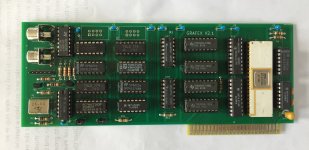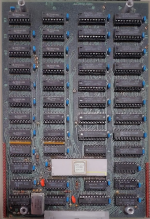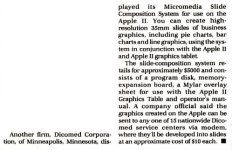erd
Experienced Member
Greetings, all,
I've recently had cause to go through all the Apple II stuff I have and this bubbled up to the surface. I got it from University Surplus quite some years ago, and even a recent Google search reveals my initial queries but no answers.
Recent explorations reveal that it's a box with an NEC 7220 graphics processor and 128K of local RAM on one board, adjustment and timing on another board, and a cable back to an Apple bus card that passes up D0-D7, A0-A3 (latched on Phi 1), R/W (latched on Phi 1), /DEVSEL, Q3 clock, and RESET. Presumably, it presents the two uPD 7220 registers back to 6502 memory space and you just stuff commands at it and watch the results on the attached monitor. I can find no software or docs, or even press releases or advertisements.
Given the flexible nature of the uPD 7220 and the 128K of RAM, there are many possibilities. The Sony A/V connector suggests that this was expected to be used at 15KHz and probably at some variation of 640x200 or 320x400 (interlaced) and up to 8-bits of color, but that's just a guess (those particular configurations use most of the 128K of RAM).
Anyone ever see one of these? Anyone have any applications for one of these?
-ethan


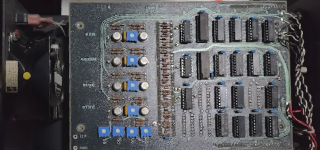
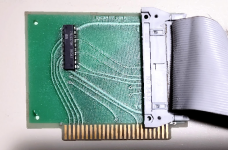
I've recently had cause to go through all the Apple II stuff I have and this bubbled up to the surface. I got it from University Surplus quite some years ago, and even a recent Google search reveals my initial queries but no answers.
Recent explorations reveal that it's a box with an NEC 7220 graphics processor and 128K of local RAM on one board, adjustment and timing on another board, and a cable back to an Apple bus card that passes up D0-D7, A0-A3 (latched on Phi 1), R/W (latched on Phi 1), /DEVSEL, Q3 clock, and RESET. Presumably, it presents the two uPD 7220 registers back to 6502 memory space and you just stuff commands at it and watch the results on the attached monitor. I can find no software or docs, or even press releases or advertisements.
Given the flexible nature of the uPD 7220 and the 128K of RAM, there are many possibilities. The Sony A/V connector suggests that this was expected to be used at 15KHz and probably at some variation of 640x200 or 320x400 (interlaced) and up to 8-bits of color, but that's just a guess (those particular configurations use most of the 128K of RAM).
Anyone ever see one of these? Anyone have any applications for one of these?
-ethan





